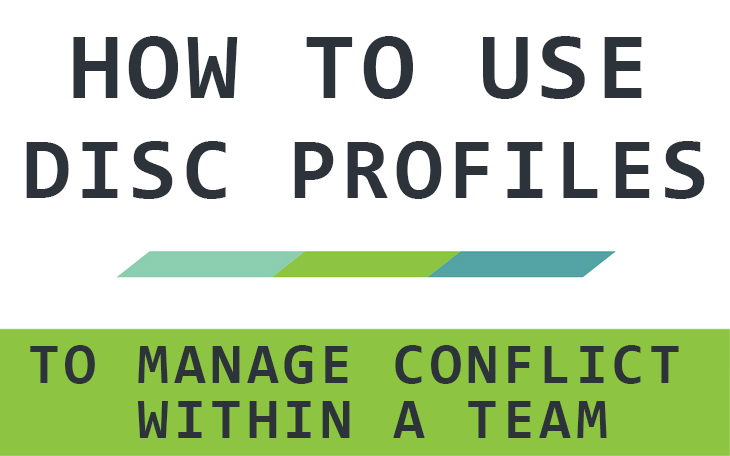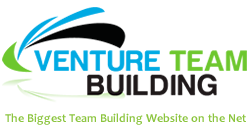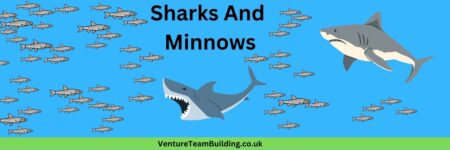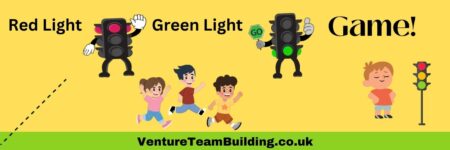
You’re in the middle of a work project and you’re about to step into a meeting to discuss the latest developments on how to move forward. But there’s a feeling of dread in your stomach and you’re not looking forward to it because you know it’ll be a fruitless meeting… just like the previous ones have been. The team is just not working well together, and you’re at your wits’ end.
Sound familiar?
At one time or another, we’ve all experienced being part of a team that just doesn’t gel and isn’t able to perform well. Conflict in the workplace is common and dealing with it takes time and effort away from the work that really matters. According to the Conflict Resolution Professionals Group, 60-80% of all difficulties in organizations stem from strained relationships between employees, and a manager spends one to two days of every work week dealing with conflict.
In this article, we examine how personality assessments such as the DISC profiles can help you manage conflict within a team.
What Causes Conflict Within A Team?
According to psychologists Art Bell and Brett Hart, there are eight common causes of conflict in the workplace:
- Conflicting resources
- Conflicting styles
- Conflicting perceptions
- Conflicting goals
- Conflicting pressures
- Conflicting roles
- Different personal values
- Unpredictable policies
Looking at the eight causes, we can see that personality differences can contribute to 3 of them: conflicting styles, conflicting perceptions and different personal values.
Using DISC Profiles to Manage Conflict Within a Team
If you’re not familiar with DISC profiles and how to apply them to team building, check out our introductory article: Using DISC Profiles For Team Building.
Conflict in the workplace is often rooted in two things: poor understanding (of each other) and poor communication. Knowledge of the DISC profiles provides managers, leaders and teams with a framework to better understand the cause of the conflict, analyze possible ways to resolve it and how to better communicate with each other.
1.Understanding personality differences
Introducing the different DISC styles at the workplace provides everyone with the same framework to understand different personalities.
If you use the four birds model created by Merrick Rosenberg, CEO of Take Flight Learning, you would have a common vocabulary to discuss how people have different preferences and tendencies when it comes to doing work.
To recap:
- “D” refers to Dominant and is represented by an Eagle. They are daring, decisive, direct, and driven.
- “I” refers to Interactive and is represented by a Parrot. Parrots are imaginative, influential, intuitive and inspirational.
- “S” refers to Supportive and is represented by a Dove. Doves are sincere, steadfast, sympathetic and satisfied.
- “C” refers to Conscientious and is represented by an Owl. They are cautious, critical, concise, and consistent.
Knowing the DISC styles makes it easier to understand why you may have trouble collaborating with a certain colleague. For instance, if you’re an Eagle, the “slowness” with which an Owl makes decisions can be frustrating. Without knowledge of the DISC styles, you would have just considered them slow and indecisive. But when you know the characteristics of an Owl, you understand that the “slowness” that you perceive is really them taking the time and effort to consider possibilities and options before making the decision.
Framing a conflict resolution discussion using DISC styles also allows for us to remove emotion from the equation. It makes us more aware that yes, people are different and that’s okay. The key is to find to ways to bridge those differences in a way that works for both people.
2.Analyze possible solutions
When it comes to conflict resolution, one size doesn’t fit all.
Once we understand why certain people behave in a certain way and we understand their natural preferences, we can then use DISC profiles as an additional tool when brainstorming possible solutions to the conflict.
Knowledge of the DISC styles of each individual allows you to tailor-fit a solution to the styles of the people involved. A conflict between a Dove and an Owl has to be solved differently from a conflict between a Dove and an Eagle.
3.Communicate
Conflict cannot be resolved if we don’t communicate. The DISC model provides us with a language of its own that we can use when resolving conflict. It’s much easier to talk about differences in personality and personal values if everyone in the team has a common frame of reference.
You can use the language of DISC and/or the four birds to improve communication and understanding. For instance, if your Parrot colleague is getting extremely excited about a new project and you don’t understand why, you could say something like: “I’m being a bit of an Owl right now, but can you explain to me why this is so important?” A sentence like that can communicate both your appreciation of their enthusiasm and your desire to understand instead of coming across as adversarial.
It’s also key to note that every DISC style has its own preferred way of communicating and a conflict resolution discussion should reflect their preferred style.
Personality assessments such as DISC profiles can be a helpful tool for managing relationships and dealing with conflict in the workplace.
To learn more about how the different DISC styles can be more flexible and adapt to each other, check out Merrick Rosenberg’s The Chameleon:– Life-Changing Wisdom for Anyone Who Has a Personality or Knows Someone Who Does.
Filled with 22 entertaining fables that reflect the challenges you experience in your life story, this book will teach you about the differences between Eagles, Parrots, Doves and Owls, and how to effortlessly adapt to people and situations around you.
Like this post? Pin to save it for your next team building session!





Thanks for sharing such a valuable information on conflict management. This helps a lot in team building, resolving conflicts and managerial skills
You’re welcome!